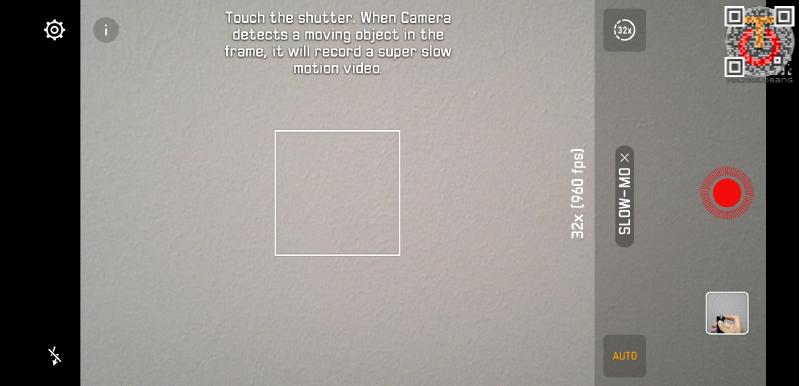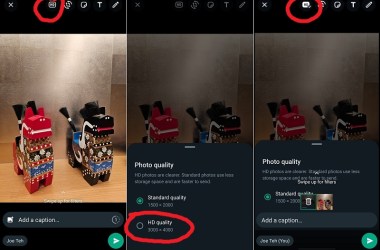Huawei has rolled out a firmware enhancement for the P20 Pro that addresses a long-standing frustration among mobile photographers: the need for precise timing to capture high-quality 960 fps Super Slo-Mo shots. The update introduces an auto-detect feature within Super Slo-Mo Mode, so subjects enter the frame and the camera automatically triggers the slowed-down recording at the optimal moment. The new firmware is identified as CLT-L29 8.1.0.131 (C432), and as with many Huawei releases, rollout can differ by region. This change represents a meaningful shift in how users interact with high-frame-rate video on a flagship device, moving away from a manual calibration process toward a more forgiving, user-friendly capture experience. For photographers who previously found themselves constrained by timing, the auto-detect capability promises a smoother workflow and more reliable results in everyday situations.
What the update changes and how it works
The new auto-detect feature in Super Slo-Mo Mode fundamentally changes the user interaction model for capturing ultra-slow-motion video. Historically, to achieve a clean 6-second segment of 960 fps footage, users often faced the challenge of starting recording at precisely the right moment and hope that the subject would enter the frame at the crucial instant. The perceived “pain” of achieving a perfect capture came from this requirement for timing precision, which could be influenced by unpredictable subject movement, lighting conditions, and platform latency. With the update, the P20 Pro’s software now monitors the scene and automatically initiates the slowed-down sequence when it detects a suitable moment, effectively removing much of the guesswork from the process. This means that the camera can begin recording a high-frame-rate sequence at a moment when the subject is properly framed, rather than relying on the user to press the record button at the exact instant.
The practical implication is a more forgiving shooting experience that increases the likelihood of obtaining a remarkable slow-motion clip with less trial and error. When a user prepares to capture a fast-moving subject—such as a running person, a moving vehicle, or a splash—the auto-detect capability works in the background to identify a moment where the subject is within composition and in focus long enough to create a compelling 960 fps sequence. In the context of the 0.2-second window referenced in the update notes, the system appears to reserve a brief, precise interval during which the subject’s presence is recognized and the record trigger is activated, ensuring that roughly six seconds of slow-motion footage are captured once the action crosses that detection threshold. The combination of a short detection period and a longer slow-motion segment provides a meaningful balance between responsiveness and capture quality.
From a user experience perspective, this change reduces the cognitive load on the photographer. Instead of maintaining perfect timing across multiple takes and potentially using luck to obtain a suitable moment, the auto-detect feature acts as a guardrail that increases the probability of a well-timed capture. This is especially valuable in dynamic scenes where movement is quick or not easily anticipated. For hobbyists and enthusiasts who may not shoot 960 fps on a daily basis, the auto-detect capability lowers the barrier to achieving film-like slow-motion sequences that highlight motion details, such as the arc of a splash, a jumping gesture, or a rapid environmental change, with fewer failed attempts.
The update’s regional variation—CLT-L29 8.1.0.131 (C432)—underscores Huawei’s common practice of tailoring firmware to different markets. While the core feature remains consistent, the exact rollout timing, feature tuning, and compatibility nuances can differ from one region to another. Users in one country may receive the update earlier than those in another, and some markets might see additional refinements or related camera optimizations bundled with the same package. This regional approach often reflects considerations such as carrier certifications, locale-specific software adjustments, and local feedback loops that inform subsequent iterations of the firmware. Regardless of region, the introduction of auto-detect signals Huawei’s ongoing emphasis on improving automated photography experiences on its high-end devices.
The practical takeaway for P20 Pro owners is clear: if you frequently use Super Slo-Mo Mode to capture dramatic motion, you can expect a more reliable capture process with less reliance on perfect manual timing. The feature’s design aims to ensure that a subject entering the frame at the right moment will be automatically recognized and converted into a six-second slow-motion clip at 960 fps, enhancing both the success rate and the perceived quality of your footage. Users who previously recorded multiple attempts to obtain a good shot are likely to experience a higher success rate on the first try, which translates into saved time, reduced camera handling fatigue, and a more enjoyable shooting experience overall.
To appreciate the impact fully, consider how the auto-detect capability complements the broader trend of intelligent camera features in modern smartphones. The P20 Pro’s approach to automatic scene evaluation, focus tracking, and exposure adjustments has often been praised for enabling consistent results. The auto-detect enhancement in Super Slo-Mo Mode adds another layer of smart automation, specifically targeting the timing challenge that has historically plagued high-frame-rate recording. It aligns with a broader industry emphasis on making advanced capabilities accessible to a wider audience, not just to seasoned photographers who can anticipate the precise moment to press the shutter.
In terms of usage philosophy, this feature embodies a shift from “expert timing” to “frustration-free creativity.” By reducing the need for meticulous planning and exact moment anticipation, the auto-detect function empowers more users to experiment with slow-motion storytelling. It invites new kinds of experimental footage—such as capturing a water droplet’s impact, a quick athletic motion, or a rapidly moving animal—without the overhead of repeated attempts. For those who do capture high-speed scenes regularly, the improvement could translate to more consistent content quality and greater confidence in relying on the camera’s intelligence to handle timing.
The update’s phrasing also leaves room for improvements and refinements in future iterations. As with many firmware-driven enhancements, the auto-detect feature may receive calibration updates to expand compatibility across more subjects, lighting conditions, and motion patterns. Huawei’s ecosystem approach—balancing hardware capabilities with software intelligence—suggests that subsequent updates could further optimize detection thresholds, reduce latency, or broaden the range of activities that trigger the auto-detect mechanism. While the immediate benefit is clear, the long-term value will emerge as users adopt the feature across diverse shooting scenarios and provide feedback that informs subsequent improvements.
From a consumer communications perspective, the narrative surrounding this update emphasizes responsiveness to user feedback. Acknowledging prior user experiences with manual timing demonstrates Huawei’s attentiveness to practical challenges faced by everyday shooters. The auto-detect feature can be framed as a direct response to real-world usage patterns, not merely a technical enhancement. For readers and potential buyers evaluating the P20 Pro, this update strengthens the device’s appeal as a capable tool for creative storytelling through motion-rich video, reinforcing the camera’s standing among its peers in the flagship segment.
In summary, the firmware update introducing auto-detect in Super Slo-Mo Mode represents a meaningful advancement for P20 Pro users. While maintaining the traditional 960 fps slow-motion capability, the camera gains a smarter trigger mechanism that reduces dependence on precise manual timing. Region-specific firmware identifiers like CLT-L29 8.1.0.131 (C432) reflect Huawei’s careful rollout strategy, ensuring that the feature reaches compatible devices in a controlled manner while potentially allowing for incremental refinements. The net effect is a more intuitive and accessible slow-motion experience that aligns with contemporary expectations for intelligent mobile photography, making it easier for users to achieve cinematic results without excessive trial and error.
Regional rollout, compatibility, and future expectations
As Huawei continues to navigate firmware deployment across diverse markets, the CLT-L29 8.1.0.131 (C432) designation serves as a reminder that software updates can be region-sensitive. In practice, this means that the auto-detect enhancement in Super Slo-Mo Mode may appear on devices at different times depending on the country, carrier involvement, and carrier-approved certification processes. Consumers should expect a staged rollout, with early adopters receiving the update first, followed by broader availability as Huawei validates performance across devices and regional configurations. For users who actively monitor their device’s software updates, checking Settings, System updates, or Huawei’s PC/phone management software is the recommended pathway to confirm whether the new Auto-Detect in Super Slo-Mo is present on their device. While the release notes may indicate the feature, the user experience can still vary based on regional firmware packaging, language localization, and preinstalled camera software variants.
In terms of device compatibility, the P20 Pro remains the focal point for this update, given its hardware capabilities that support high-frame-rate video capture. The auto-detect feature, by design, leverages the phone’s processor and image sensor to perform real-time analysis while recording, a combination that could be influenced by environmental factors like lighting, color contrast, and scene dynamics. Although 960 fps slow-motion is an intensive capture mode, the aim of the auto-detect enhancement is to ensure robust performance across a wide range of scenes, from static subjects to fast-moving actions. It is important to note that even with auto-detect, certain scenarios may still benefit from manual intervention, such as when the subject’s movement is extremely rapid or when the scene’s lighting is suboptimal. The technology is intended to reduce misses and improve success rates, not to guarantee perfect outcomes in every situation.
Users should also anticipate ongoing refinements to the balance between detection sensitivity and false positives. In some cases, a camera’s subject detection could misidentify a frame as suitable for slow-motion capture, potentially resulting in frames that do not deliver the expected cinematic effect. However, the overall trajectory is positive: the feature is designed to learn from diverse shooting conditions and user feedback to minimize such issues. As Huawei collects data from real-world usage, subsequent updates may calibrate the detection algorithms to handle more edge cases or optimize performance for common scenarios such as sports, concerts, or nature filming. The result is a more versatile tool that adapts to the user’s shooting style and the environment in which they operate.
The upgrade’s implications extend beyond individual user experiences. For content creators who rely on mobile devices to capture timely footage, improving the probability of getting a good slow-motion shot on the first attempt translates into efficiency gains and more opportunities to craft engaging narratives. This aligns with a broader industry trend where manufacturers continue to embed intelligent automation into camera systems, letting devices handle the micro-decisions that previously required manual control. In turn, this can influence user expectations, with audiences increasingly seeking high-quality slow-motion footage that looks polished even when captured quickly on a smartphone. Over time, as more users adopt the auto-detect feature, the aggregate impact on the perception of Huawei’s camera capabilities could become a notable differentiator in competitive markets.
Finally, the possibility that Huawei P20 owners may receive similar EMUI updates in parallel or in the near future is worth noting. The parallel development of user-interface refinements alongside camera enhancements demonstrates Huawei’s approach to delivering an integrated experience that resonates with consumer demand for cohesive software performance. Readers who own older models or different Huawei devices might look for analogous improvements in their own EMUI builds, especially when the company communicates a commitment to expanding advanced camera features across its ecosystem. While the emphasis in this update is the P20 Pro’s Super Slo-Mo auto-detect, the broader implication is that Huawei is actively pursuing a more automated, user-friendly photography experience across its range of devices.
Practical implications for photographers and daily users
For everyday photographers, the auto-detect enhancement translates into a more forgiving workflow when exploring high-frame-rate video. Users can approach dynamic scenes with a greater degree of confidence, knowing that the camera can special-case the moment when the action is presented in an aesthetically favorable manner within the frame. The six-second slow-motion segment remains a hallmark of the feature, but the reliance on exact timing is reduced, which broadens the range of subjects and scenarios that are viable targets for 960 fps capture. This can encourage experimentation, as more attempts are likely to yield compelling results with less manual effort and repeated rehearsals. In practical terms, this means faster content production for social media, demonstrations, or creative clips that rely on dramatic motion.
From a learning perspective, the auto-detect capability invites users to observe how the camera’s intelligence handles motion cues and how different subjects respond to the detection algorithm. Observers can compare results across scenarios—static backgrounds, high-contrast edges, moving subjects against busy scenes—to understand how lighting, motion speed, and depth perception influence the success rate of the feature. Such experimentation can help users refine their shooting style and leverage the technology to its fullest, rather than treating the feature as a black box. Over time, users may discover best practices tailored to their preferred subjects, whether that means capturing water splashes, athletes in motion, or playful pet antics.
From an educational standpoint, sharing experiences about how the auto-detect feature performs in various conditions can help the broader community calibrate expectations. For aspiring videographers, understanding that a 0.2-second detection window exists indicates the speed and responsiveness required to make the feature work as intended. This awareness helps set realistic expectations that the camera’s automation is optimized for a wide variety of scenes, but not infallible in every possible environment. Consequently, users can balance reliance on auto-detect with manual oversight when a specific shot demands precise framing or timing beyond the algorithm’s current capabilities.
In terms of device longevity and value proposition, firmware updates that improve core camera functionality can extend the practical lifespan of a device like the P20 Pro. Even as new models emerge, older devices with refined software features maintain relevance with continued enhancements to core capabilities. The auto-detect addition to Super Slo-Mo Mode demonstrates Huawei’s commitment to maintaining competitiveness by enriching the user experience through software, which is a critical differentiator in a market that increasingly prioritizes intelligent camera experiences. This strategy benefits existing owners who want to extract maximum utility from their devices without needing to upgrade hardware, reinforcing the value of ongoing software support as a core facet of the smartphone experience.
For readers who are curious about broader camera trends, the introduction of intelligent auto-detection for motion capture is part of a larger movement toward automation in photography and videography. The trend emphasizes the importance of algorithms that assist with timing, exposure, focus, and motion framing. While professional or enthusiast-grade equipment still offers manual control for precision, consumer devices are steadily incorporating smarter features that empower non-experts to achieve professional-looking results with less trial and error. The P20 Pro’s Super Slo-Mo auto-detect update is a concrete example of this shift, illustrating how software-level improvements can meaningfully enhance the perceived quality and accessibility of advanced camera features.
Real-world expectations and what to monitor post-update
After installing the firmware update that contains auto-detect in Super Slo-Mo Mode, users should monitor several practical indicators to gauge the feature’s effectiveness. First, assess the consistency of successful slow-motion captures across a range of subjects, from sports to casual movement to environmental actions like water or dust in motion. Note whether the auto-detect mechanism triggers in scenarios where a subject is entering the frame rather than moving within it, and how quickly the video begins after detection. In well-lit environments, the detection may be smoother, while low-light conditions can still present challenges, given the general constraints of high-frame-rate recording. Observations will help determine whether any further refinements might be necessary or whether the user should rely on manual controls in specific circumstances.
Second, compare the results across different regional firmware builds if possible. If a user has access to the same device model from multiple regions or can borrow a friend’s device with a different regional build, they can evaluate whether there are noticeable differences in detection speed, accuracy, or the kinds of scenes that trigger the auto-detect feature. This kind of comparison can provide practical insight into how region-specific tuning affects performance and might guide users in understanding the best contexts to use the feature. Third, consider how the feature interacts with other camera modes and settings. For instance, if a user commonly shoots with HDR, exposure compensation, or specialized color profiles, it’s worth verifying that the auto-detect mechanism remains effective without unintended conflicts with other processing steps. A well-integrated result will feel seamless and non-disruptive to the broader camera workflow.
Finally, keep an ear to user feedback channels and official communications from Huawei, as the company often uses firmware iteration to refine automated features. If future updates address edge cases, optimize performance in challenging lighting, or expand the range of detectable motion patterns, users should expect incremental improvements over time. The feedback loop between users and manufacturers is a critical component of how intelligent camera features mature, so contributing your experiences can help shape subsequent enhancements that benefit a broader audience.
Conclusion
Huawei’s P20 Pro firmware update introducing auto-detect in Super Slo-Mo Mode marks a significant step forward in making 960 fps high-frame-rate video more accessible and reliable. By enabling automatic timing when the subject enters the frame, the update reduces the traditional reliance on precise user timing, lowers the barrier to obtaining dramatic slow-motion footage, and enhances the overall shooting experience. The update, identified as CLT-L29 8.1.0.131 (C432), may roll out differently across regions, reflecting Huawei’s regional deployment approach. While the feature promises notable improvements in success rates for slow-motion captures, regional variations, lighting conditions, and scene dynamics can influence performance. Users are encouraged to monitor the update’s effectiveness in real-world scenarios, compare results across different environments, and share their experiences to contribute to the ongoing refinement of intelligent camera features within Huawei’s EMUI ecosystem. The broader implication is clear: auto-detect in Super Slo-Mo Mode aligns with the industry’s move toward smarter automation that empowers a wider audience to achieve cinematic results with minimal manual effort. As Huawei continues to evolve its camera software, readers can anticipate further enhancements that complement hardware capabilities and reinforce the P20 Pro’s relevance in a rapidly advancing mobile photography landscape.





